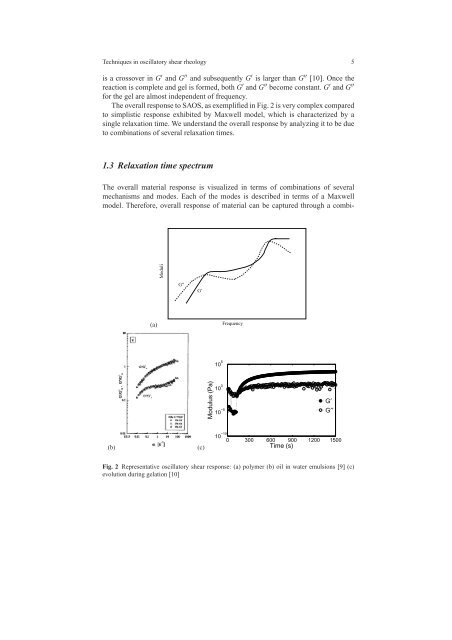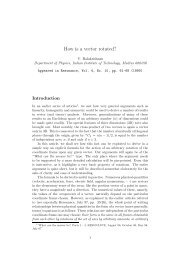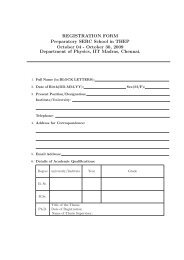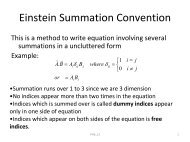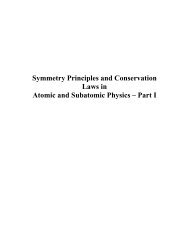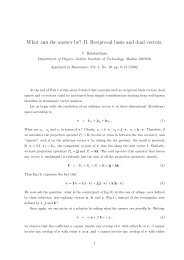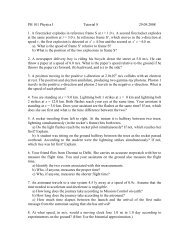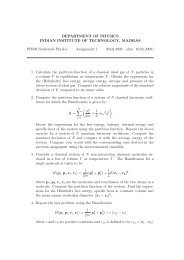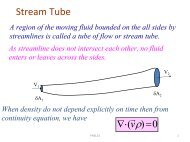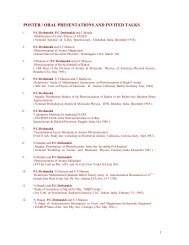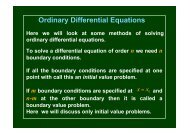Techniques in oscillatory shear rheology - Indian Institute of ...
Techniques in oscillatory shear rheology - Indian Institute of ...
Techniques in oscillatory shear rheology - Indian Institute of ...
You also want an ePaper? Increase the reach of your titles
YUMPU automatically turns print PDFs into web optimized ePapers that Google loves.
<strong>Techniques</strong> <strong>in</strong> <strong>oscillatory</strong> <strong>shear</strong> <strong>rheology</strong> 5is a crossover <strong>in</strong> G ′ and G ′′ and subsequently G ′ is larger than G ′′ [10]. Once thereaction is complete and gel is formed, both G ′ and G ′′ become constant. G ′ and G ′′for the gel are almost <strong>in</strong>dependent <strong>of</strong> frequency.The overall response to SAOS, as exemplified <strong>in</strong> Fig. 2 is very complex comparedto simplistic response exhibited by Maxwell model, which is characterized by as<strong>in</strong>gle relaxation time. We understand the overall response by analyz<strong>in</strong>g it to be dueto comb<strong>in</strong>ations <strong>of</strong> several relaxation times.1.3 Relaxation time spectrumThe overall material response is visualized <strong>in</strong> terms <strong>of</strong> comb<strong>in</strong>ations <strong>of</strong> severalmechanisms and modes. Each <strong>of</strong> the modes is described <strong>in</strong> terms <strong>of</strong> a Maxwellmodel. Therefore, overall response <strong>of</strong> material can be captured through a combi-ModuliG"G’(a)Frequency10 5 Time (s)Modulus (Pa)10 010 −5G′G′′(b)(c)10 −100 300 600 900 1200 1500Fig. 2 Representative <strong>oscillatory</strong> <strong>shear</strong> response: (a) polymer (b) oil <strong>in</strong> water emulsions [9] (c)evolution dur<strong>in</strong>g gelation [10]


